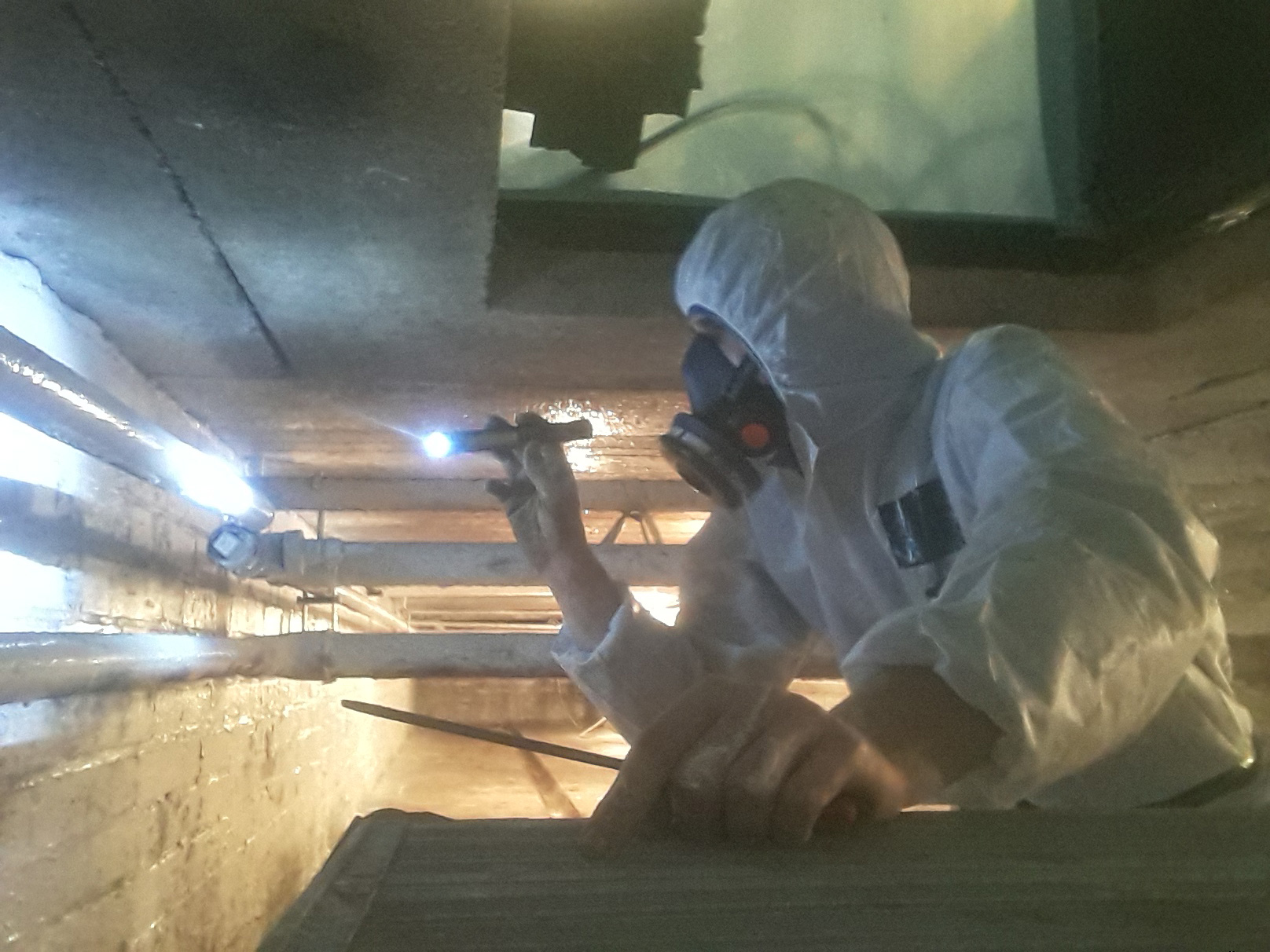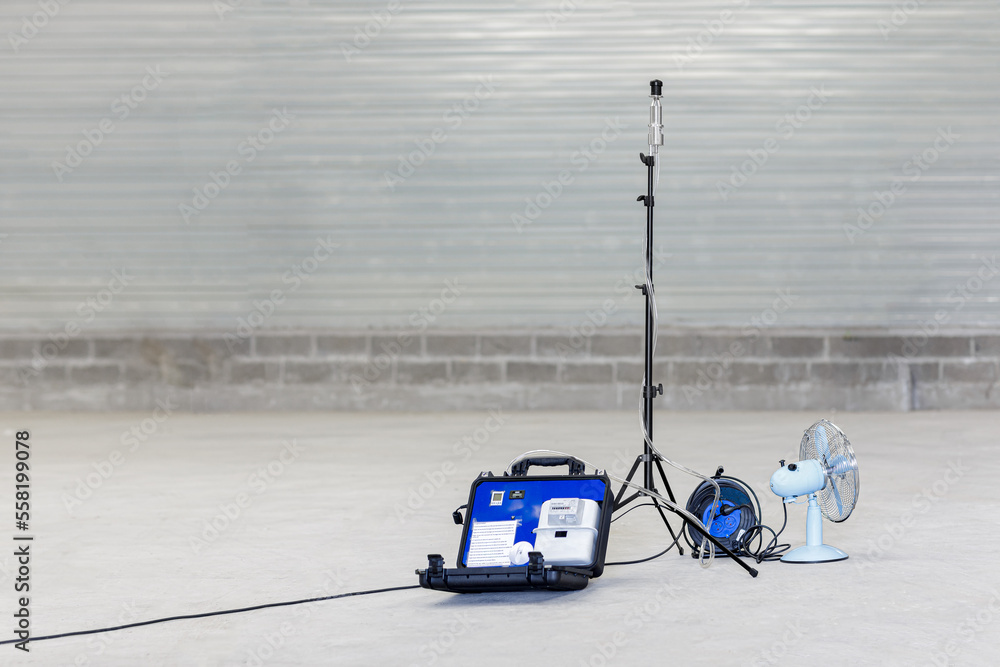Your Overview to Effective Asbestos Testing Procedures
Asbestos screening treatments are an essential part of making sure the safety of interior atmospheres, especially in older structures where this dangerous material might exist. The potential wellness risks related to asbestos direct exposure make it important to come close to screening with precision and thoroughness. From understanding the properties of asbestos to successfully translating examination outcomes, a comprehensive overview can equip people with the knowledge and devices needed to browse this complex procedure. Stay tuned to discover the vital steps and factors to consider that can help you secure against the risks posed by asbestos.
Understanding Asbestos and Its Risks
Asbestos, a normally occurring mineral understood for its warmth resistance and sturdiness, postures severe health and wellness threats when its fibers are inhaled or consumed. Asbestos Air Sampling. Direct exposure to asbestos can cause major wellness conditions such as lung cancer cells, asbestosis, and mesothelioma. Regardless of its advantageous residential or commercial properties, asbestos has been widely outlawed in many countries due to the tried and tested web link in between asbestos exposure and these dangerous illness
The risk lies in the microscopic fibers that can quickly become airborne when asbestos-containing products are disrupted or damaged. When inhaled, these fibers can come to be lodged in the lungs, causing inflammation and scarring with time. The latency duration in between exposure to asbestos and the growth of associated illness can cover numerous decades, making early discovery and prevention essential.
Asbestos was typically used in building and construction products, insulation, and automobile components prior to its health risks were totally comprehended. Today, proper screening and elimination of asbestos-containing materials are necessary to protect individuals from the risks connected with asbestos exposure.
Identifying Prospective Asbestos Materials
The recognition of prospective asbestos products is a vital step in making sure the safety and security of individuals subjected to unsafe compounds in different settings. Asbestos can be found in a wide variety of building products, consisting of yet not limited to insulation, ceiling ceramic tiles, flooring ceramic tiles, cement sheets, and roof covering shingles - asbestos survey. Determining these products properly is vital to properly managing the risks related to asbestos direct exposure

In cases where aesthetic evaluation is undetermined, samples of believed materials can be accumulated and sent to accredited research laboratories for testing. These research laboratories utilize specialized techniques such as polarized light microscopy or transmission electron microscopy to accurately figure out the presence of asbestos fibers in the examples. By following extensive identification treatments, people can successfully mitigate the threats related to asbestos direct exposure.
Selecting the Right Screening Method
Recognition of potential popcorn ceiling asbestos years asbestos products plays an important role in establishing the proper screening technique for precise asbestos fiber discovery. As soon as thought materials have actually been identified, picking the right testing technique is vital to make certain dependable outcomes. There are 2 primary methods for asbestos screening: polarized light microscopy (PLM) and transmission electron microscopy (TEM) PLM is generally used for preliminary testing as it is cost-effective and provides quick outcomes. PLM has constraints in finding asbestos fibers that are smaller sized than 1 to 3 microns. On the other hand, TEM is an advanced technique that can precisely determine asbestos fibers at the ultrastructural level. While TEM is more costly and taxing than PLM, it uses higher sensitivity and specificity in asbestos detection. Choosing the ideal testing method relies on numerous variables such as the kind of product being checked, the needed level of sensitivity of the analysis, and the offered budget. It is vital to speak with approved asbestos testing specialists to determine the most suitable method for your particular screening requirements.
Conducting Example Collection Safely
When gathering samples for asbestos testing, focusing on precaution is extremely important to lessen potential direct exposure dangers. Asbestos fibers are unsafe when interrupted, making it important to comply with proper safety and security methods throughout sample collection - Asbestos Air Sampling. Before starting the tasting process, make sure that you are geared up with individual protective devices (PPE) such as non reusable coveralls, gloves, masks, and safety glasses to avoid breathing or call with asbestos fibers
It is vital to wet the sampling area using a mild mist of water to stop the fibers from ending up being airborne during collection. When accumulating samples and prevent hostile scuffing or piercing that could release asbestos fibers right into the air, Usage caution. Instead, thoroughly reduced a little item of the material making use of suitable tools and place it right into a secured container for evaluation by a certified research laboratory.
In addition, classifying each example with detailed details pertaining to the tasting location, collector, and date's name is necessary for exact record-keeping and evaluation. By adhering to these safety and security asbestos duct removal cost standards, you can carry out example collection for asbestos testing successfully while decreasing the threat of exposure.
Interpreting Examination Results and Following Actions

Final Thought
In conclusion, reliable asbestos screening procedures are vital in determining and managing possible wellness dangers connected with asbestos exposure. By comprehending the threats of asbestos, identifying possible products, choosing the ideal testing method, performing sample collection safely, and translating examination results accurately, organizations and people can take the needed actions to secure themselves and others from the unsafe results of asbestos. It is vital to prioritize safety and security and proper testing methods to make certain a healthy setting for all.

Recognition of potential asbestos products plays a critical role in figuring out the ideal screening technique for accurate asbestos fiber discovery. The examination results will certainly suggest the visibility or absence of asbestos, the type of asbestos fibers existing, and the focus degrees.In conclusion, effective asbestos screening procedures are vital in determining and managing prospective health threats connected with asbestos exposure. By comprehending the dangers of asbestos, recognizing prospective materials, picking the ideal testing method, performing sample collection securely, and analyzing test results properly, people and organizations can take the necessary actions to safeguard themselves and others from the harmful results of asbestos.